|
Displaying items by tag: painter

American pop artist Andy Warhol (1928-1987) brought $380.3 million in sales in 2012, exceeding Chinese ink painter Zhang Daqian (1899-1983) as the world’s highest seller at auction. Warhol also surpassed modern master Pablo Picasso (1881-1973) and Gerhard Richter (b. 1932), who holds the record for top living artist at auction.
Warhol’s all-time sales reached $2.9 billion while Picasso, who is regarded as the world’s costliest artist at auction, hit $5 billion. Picasso’s total auction sales for 2012 were down to $334.7 million from $366 million. Officials blame lack of supply for the dip in Picasso sales; while works by Picasso remain in demand, there are currently fewer exceptional pieces on the market. Daqian took an even harder hit than Picasso, slipping from $782.4 million at auction to $241.6, most likely the result of the economic and political uncertainty that pervaded China in 2012, which affected the international demand for Chinese art.
The restructuring that occurred last year knocked Daqian from first to fourth place in terms of selling power, a reflection of the increased demand for western postwar and contemporary works in the art market. A testament to contemporary art’s dominance, auctions in that category raising a record $1.1 billion in November 2012 through sales at Sotheby’s, Christie’s, and Phillips de Pury & Co.
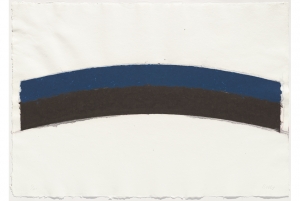
Ellsworth Kelly: Colored Paper Images is currently on view at the National Gallery of Art in Washington, D.C. through December 1, 2013. Kelly (b. 1923), a painter, printmaker, and sculptor, is best known for his hard-edge and Color Field paintings as well as for his involvement in the minimalist movement.
The exhibition at the National Gallery features a series of paper-pulp works that were first unveiled in 1977. The 23 works, which are drawn from the museum’s collection, feature erratic edges and irregular textures, a departure from Kelly’s previous works, which are comprised of sharp angles and precise curves. Earl A. Powell III, director of the National Gallery of Art said, “Kelly has long been recognized for his mastery of form and color, but even to those who know his work well, these Colored Paper Images will come as a revelation.”
A pioneering force in postwar abstraction, Kelly created his colored paper images by placing molds on single sheets of paper and filling them with colored and pressed paper pulp. Once the pulp settled, the molds were removed and the sheet along with the colored pulp was run through a printing press, fusing the damp paper layers together. Multiple impressions were made of each image.
The National Gallery of Art has a longstanding relationship with Kelly, which began in 1975 when the institution acquired its first work by the artist. The Gallery now owns over 200 pieces by Kelly including paintings, sculptures, drawings, and prints.
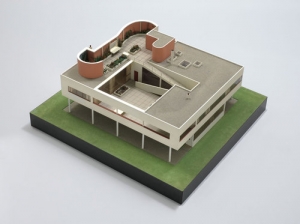
The Museum of Modern Art is busy organizing the largest exhibition on the groundbreaking architect Le Corbusier ever to be held in New York. Le Corbusier: An Atlas of Modern Landscapes is set to open on June 9 and run through September 23, 2013.
Born Charles-Édouard Jeanneret, Le Corbusier defined modern architecture during his career, which spanned five decades. Le Corbusier was not just an architect, but also an urban planner, a painter, a writer, a designer, and a theorist. Le Corbusier’s best-known buildings include the Palace for the League of Nations in Geneva, Villa Savoye in Poissy, France, the Swiss Building in Paris, and the Secretariat at the United Nations Headquarters in New York.
An Atlas of Modern Landscapes will be curated by the modern architecture scholar, Jean-Louis Cohen, and will cover Le Corbusier’s long and varied career. The exhibition will explore Le Corbusier’s contributions to architecture, interior design, and city planning. Works on view will include writings, photographs, sketches, watercolors, and models of some of Le Corbusier’s most renowned works.
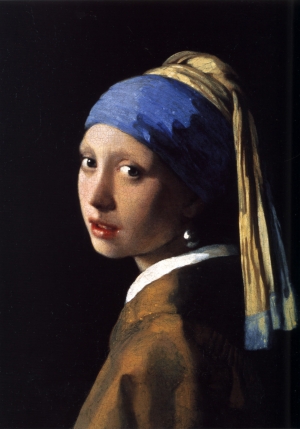
Considered one of Dutch painter Johannes Vermeer’s (1632-1675) masterworks, Girl With a Pearl Earring has spent over a century at the Royal Picture Gallery Mauritshuis in The Hague. Sometimes referred to as the “Dutch Mona Lisa,” the painting, which is not dated, features a wide-eyed young girl whose gaze has been captivating audiences for hundreds of years.
Girl With a Pearl Earring is one of 15 paintings heading to the Frick Collection in New York from the Netherlands. Vermeer, Rembrandt and Hals: Masterpieces of Dutch Painting From the Mauritshuis opens on October 22, 2013 and runs through January 19, 2014. Because of the high level of interest in the enigmatic work, chief curator at the Frick, Colin Bailey, decided to give Girl With a Pearl Earring its own space in the museum’s Oval Room. The rest of the exhibition will be on display in the Frick’s East Gallery.
The Mauritshuis is currently undergoing renovations, which is why part of its collection has been sent out for exhibition. In addition to the Frick, the works will appear in Japan (through January 6, 2013), San Francisco’s de Young Museum (January 26, 2013-June 2, 2013), and Atlanta’s High Museum of Art (June 22, 2013-September 29, 2013). The rest of the Mauritshuis’ collection will remain in the Netherlands and will be exhibited at The Hague’s Gemeentemuseum until the renovations are completed.

One of the most significant artists of the 20th century, Henri Matisse (1869–1954) is best known for his use of color and fluid, innovative forms. A leading figure in modern art, the French artist defined the Fauvist movement, but defied classification. The works of Nicolas Poussin, Édouard Manet, Auguste Rodin, Paul Gauguin, Paul Cézanne, and Jean-Baptiste-Siméon Chardin inspired Matisse and he communed with groundbreaking artists such as Camille Pissarro, André Derain, and Gertrude Stein.
The Metropolitan Museum of Art’s exhibition Matisse: In Search of Painting opens on December 4 and explores the evolution of Matisse as a painter. Matisse worked rigorously, often painting the same scene and subject over and over again to gauge his own progress and compare various techniques, a process he developed during his academic training.
In Search of Painting features just 49 vibrant canvases but spans Matisse’s entire career. Organized by Rebecca Rabinow, a curator of modern and contemporary art, the exhibition places the works in pairs and groups by subject to illustrate Matisse’s methodical process. In the 1930s, Matisse began having photographs taken at various stages of each painting to document their evolution. Three of the finished canvases along with their accompanying photographs will also be on view. The juxtaposition illustrates Matisse’s own self-awareness and the arduous process that led to each finished canvas.
Matisse: In Search of Painting will be on view through March 17, 2013.
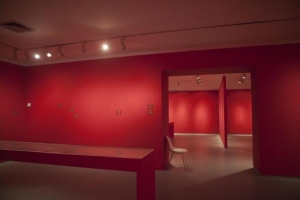
While rocket fire is a normal occurrence in southern Israel, the recent attacks on Tel Aviv, the country’s northern capital city, has art museums in the area taking extra precautions. The walls of the Tel Aviv Museum of Art have been stripped and nearly 200 works, including approximately 100 works by relatives of the Renaissance master Pieter Brueghel the Elder, were moved to a rocket-proof safe late last week.
While the Israeli-Palestinian conflict has continued to escalate, other museums are following suit. The curator of the Ashdod Art Museum in southern Israel has taken down 15 works by the leading Contemporary Israeli artist, Tsibi Geva, and placed them in a vault deep underground. The structure is designed to withstand both rocket fire and biological weapons. It was the first time the Ashdod Museum has taken down any art amid attacks since opening in 2003.
While air strikes are creeping up from the southern Israel’s traditional rocket range to Jerusalem and Tel Aviv, some institutions are holding out on stashing their works. The Eretz Israel Museum in Tel Aviv, which specializes in Near Eastern antiquities and other art, has left its treasures in place. The Israel Museum in Jerusalem, which houses some of the country’s most prized antiquities and cultural artifacts has also continued to operate as usual.
The last time the Tel Aviv Museum of Art took down works during a conflict was in 1991 when Iraqi scud missiles pounded the city during the Gulf War.
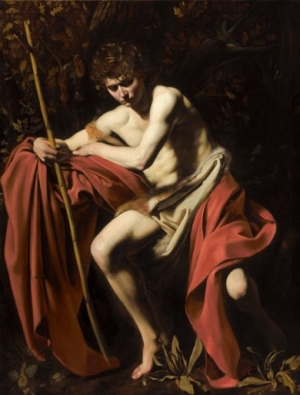
Bodies and Shadows: Caravaggio and His Legacy opened on Sunday at the Los Angeles County Museum of Art (LACMA). The exhibition is devoted to the Italian painter Michelangelo Merisi da Caravaggio, (1517-1610) one of the most historically influential artists, best known for his use of lighting as well as his sensitivity to the physical and emotional state of his subjects.
The show at LACMA will feature an unprecedented eight works by Carvaggio himself. Fifty additional paintings will explore his influence on painters from France, Spain, and the Netherlands including Georges de La Tour, Gerrit van Honthorst, Velazquez, and Simon Vouet. The exhibition will be on view through February 10, 2013.
Bodies and Shadows was co-organized by LACMA, the Musee Fabree, the Musee des Augustins, and the Wadsworth Athenaeum Museum of Art. All four museums are members of the consortium the French Regional American Museum Exchange. The exhibition will travel to the Wadsworth Athenaeum after LACMA from March 8, 2013 through June 15, 2013.
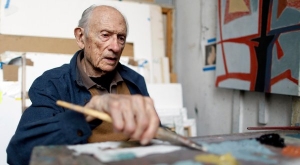
A printmaker and painter, there is a quiet, striking quality that pervades all of Will Barnet’s art. Best known for his portraits of women, children, animals, family members, and friends, Barnet passed away at his home in Manhattan on November 13. He has lived at the National Arts Club building on New York City’s Gramercy Park since 1982. Barnet was 101.
A native of Beverly, Massachusetts, Barnet studied at the School of the Museum of Fine Arts, Boston and then, starting in 1931, at the Arts Students League in New York. It was here that Barnet studied briefly with the early Modernist painter Stuart Davis and became acquainted with Arshile Gorky, a major influence on Abstract Expressionism. Four years after joining the League, Barnet was named the official printer and went on to work for the Works Progress Administration Federal Art Project. He also made prints for well-known artists such as the Mexican muralist Jose Clemente Orozco and the painter and cartoonist William Gropper.
Barnet started out as a Social Realist printmaker and had his first solo exhibition in 1935 at the Eighth Street Playhouse in Manhattan. Three years later, he had his first gallery show at the Hudson Walker Gallery. It was during this time that he married Mary Sinclair, a painter and fellow student. They had three sons.
In the 1940s Barnet was inspired by Modernist inclinations and his paintings became more colorful and fractured, depicting family scenes and young children. By the end of the decade Barnet moved towards complete abstraction after becoming involved with the Indian Space Painters, a group that created abstract paintings using forms from Native American art and modern European painting.
In the 1950s Barnet divorced Sinclair and remarried Elena Ciurlys with whom he had a daughter. It wasn’t until the 1960s that Barnet returned to representational painting, often using his wife and daughter as subjects. Barnet’s style had evolved and the portraits from this time are flatter and more exact. He also made a number of portraits of the architect Frederick Kiesler, the art critic Katherine Kuh, and the art collector Roy Neuberger during this time.
Barnet never stopped painting and continued to experiment and evolve stylistically, returning to abstraction in 2003. In 2010 he was the subject of the exhibition Will Barnet and the Art Students League at the Phyllis Harriman Mason Gallery in Manhattan. He was awarded a National Medal of Arts in 2011, which he accepted from President Obama at a ceremony at the White House. The subject of many museum retrospectives, Will Barnet at 100, which took place at the National Academy Museum in 2011, was the last.
Besides his work as an artist, Barnet was also an influential instructor. He taught graphic arts and composition at the Art Students League in 1936 and went on to teach painting at the school until 1980. Barnet also taught at Cooper Union from 1945 to 1978 and briefly at Yale, the Pennsylvania Academy of Fine Arts, and other schools.
Barnet is survived by his wife, three sons, one daughter, nine grandchildren, and three great-grandchildren.

An expansive survey of works by the American realist artist, George Bellows, will open November 15 at the Metropolitan Museum of Art in New York City. The exhibition features 120 works including the paintings of boxing matches and gritty New York tenements that Bellows is best known for. The artist also painted cityscapes, seascapes, war scenes, portraits, and made illustrations and lithographs over the course of a varied career that was cut short when Bellows passed away at 42.
Born and raised in Columbus, Ohio, Bellows moved to New York City in 1904 to study with the influential artist and teacher, Robert Henri, and soon became the youngest member of the Ashcan School. Dedicated to chronicling the realities of day-to-day life, Bellows made a name as the boldest of the Ashcan artists. The Met acquired Bellows’ Up the Hudson (1808), the institution’s first Ashcan painting, in 1911.
Organized by the National Gallery of Art in Washington, D.C. in association with the Met and London’s Royal Academy of Art, the retrospective is the most comprehensive presentation of Bellows work in nearly fifty years. The exhibition will be on view through February 18, 2013.

Xavier Salomon, a curator in The Metropolitan Museum of Art’s European paintings department, announced that the institution has acquired The Penitent Saint Peter by Jusepe de Ribera. The early work by the 17th-century painter is the first Spanish painting purchased by the museum in over 40 years. One of the Met’s most esteemed artworks, Diego Velazquez’s portrait, Juan de Pareja (1650), had been the most recent Spanish acquisition.
The painting by Ribera is a full-length portrait of St. Peter from 1612-13, when the artist was in his early 20s. Up until about 10 years ago when the Italian scholar Gianni Papi realized that a group of paintings once attributed to an anonymous artist were in fact Ribera’s, none of the artist’s early works were known. Juan de Pareja wasn’t identified as a Ribera painting until last year.
Purchased from Madrid dealers Coll & Cortes, this is the second work by Ribera in the Met’s permanent collection. Officials declined to say what they paid for the painting, but experts value the work at around $1.3 million. The other Ribera painting in the museum’s collection is a late work from 1648, four years before the artist’s death, titled The Holy Family with Saints Anne and Catherine of Alexandria.
|
|
|
|
|